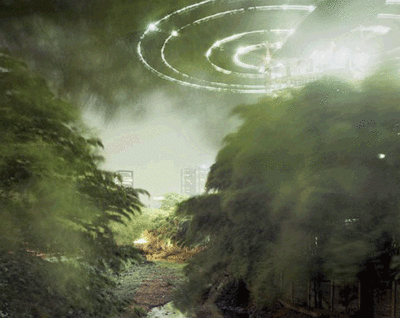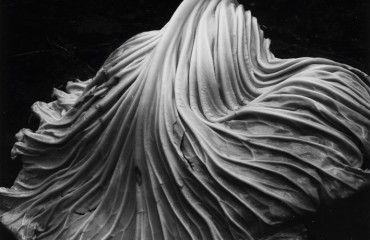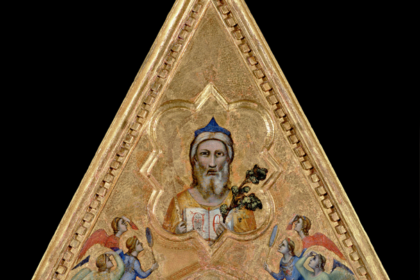
T
he big exhibition in Milan dedicated to Giotto is about to close, those who read these pages will only have a few days to go and see it. But it is worth writing about it, and for those who have not had a chance to enjoy it in person, we offer some impressions and suggestion that can be imagined.
Giotto is undoubtedly the most pop of medieval artists. We all know the legend of the “O” which struck so much the older Cimabue, all of us have used crayons and markers that recall the myth. Many have looked great crucifixes of rare humanity, still others have immersed in systems of amazing fresco images such as Scrovegni Chapel in Padua and the Basilica of St. Francesco in Assisi. It was about the fourteenth century, and it was building the culture of a country which did not yet exist but that through the language of Dante and the artists who traveled from town to town was beginning to feel a country, though in different power systems who ruled the individual zones.
Giotto exhibition is extraordinary not so much for the works – no one doubts the extraordinary nature of the boards, the frescoes and projects by Giotto, from its contemporaries that accorded to him a pre-eminent and indisputable position – but for having brought together in a few rooms of Palazzo Reale in Milan 14 paintings that never, until now, had shared spaces. A journey from the early works of the artist to the last tables, when Giotto played the role of authentic VIP that boasted urgent requests by sovereigns and cardinals, bankers and kings. Fragments and complete altarpieces demonstrate growth and innovations that progressively enter in an extremely symbolic painting – as it was throughout medieval art – and that reveal more and more focused attention to the representation of nature and especially towards humanization of feelings which strongly contributed to overcome the cold solemnity of the oldest paintings. Impossible to describe in detail the altar, fragments of frescoes that by an almost scenic device seem relocated in their church of origin, the cornice that in ancient times has been removed from the original work and is now ajar, nearby, to the original altarpiece and both can be read together and ideally bring together. It is impossible to emphasize sweet gestures of Madonnas that are first of all mothers, of sensitive angels protecting with dark glasses the eyes from the dazzling divine splendor, faces of saints that release emotions hitherto inconceivable.
To frame the boards with gold background, brightly colored and with complex and sumptuous buildings, there is a staging by Mario Bellini. Iron and “twilight gray” are the only elements, subject to light, outlining profane altars with powerful volumes on which altarpieces stand, while putting in the shade the prestigious presence of the Royal Palace – that Visconti palace where Giotto was present at the end of his life – to achieve, as the architect says, “the ‘ground zero’ for setting up and a goal: make room, even figuratively, only to Giotto. “
Giotto, Italy
By Serena Romano and Pietro Petraroia
Until January 10th, 2016
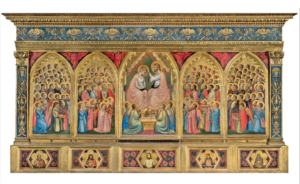
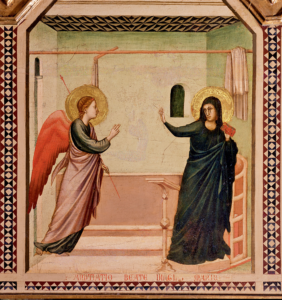
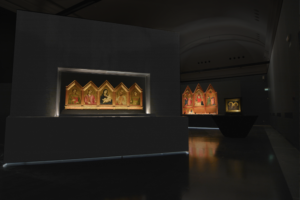
 English
English  Italiano
Italiano 

